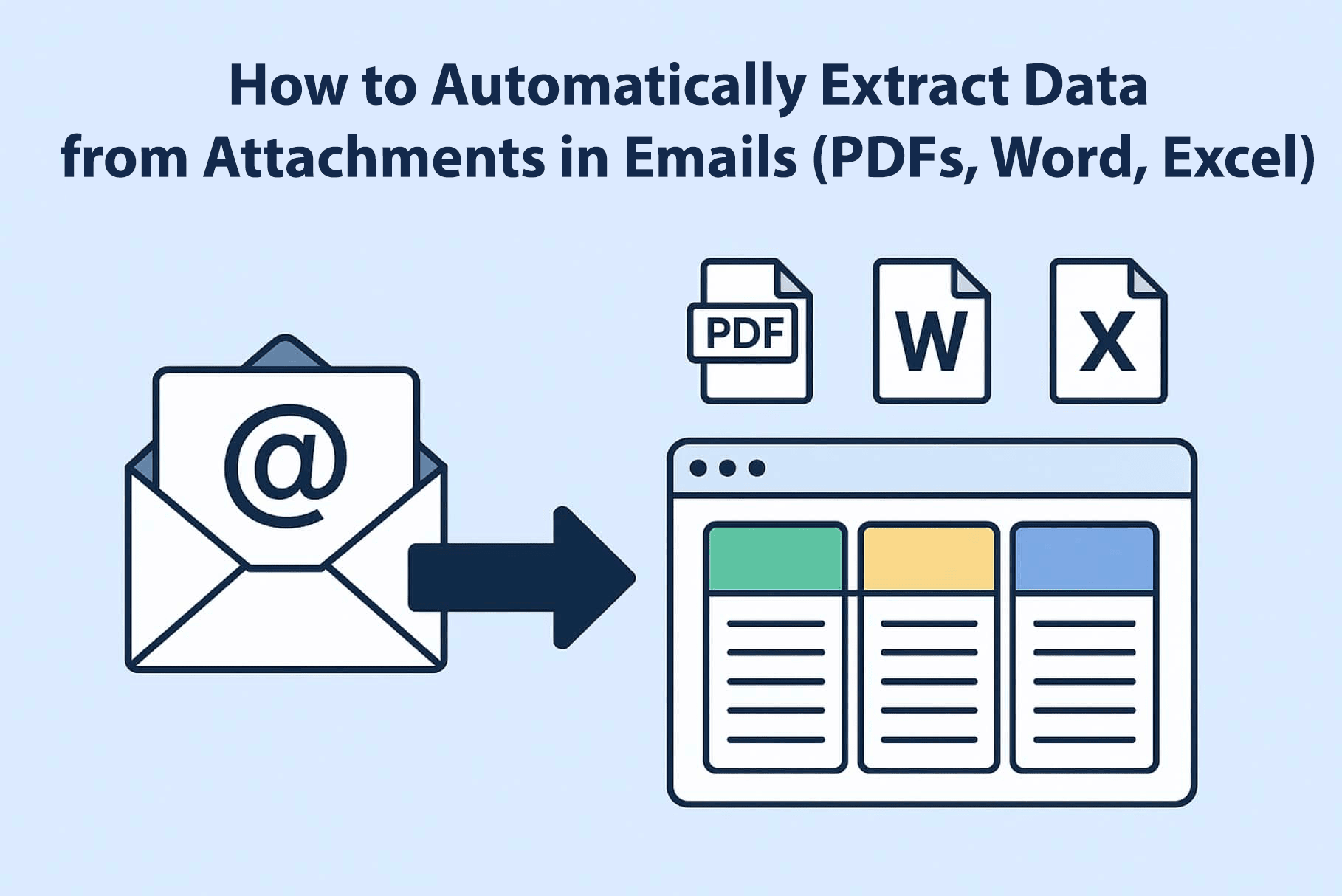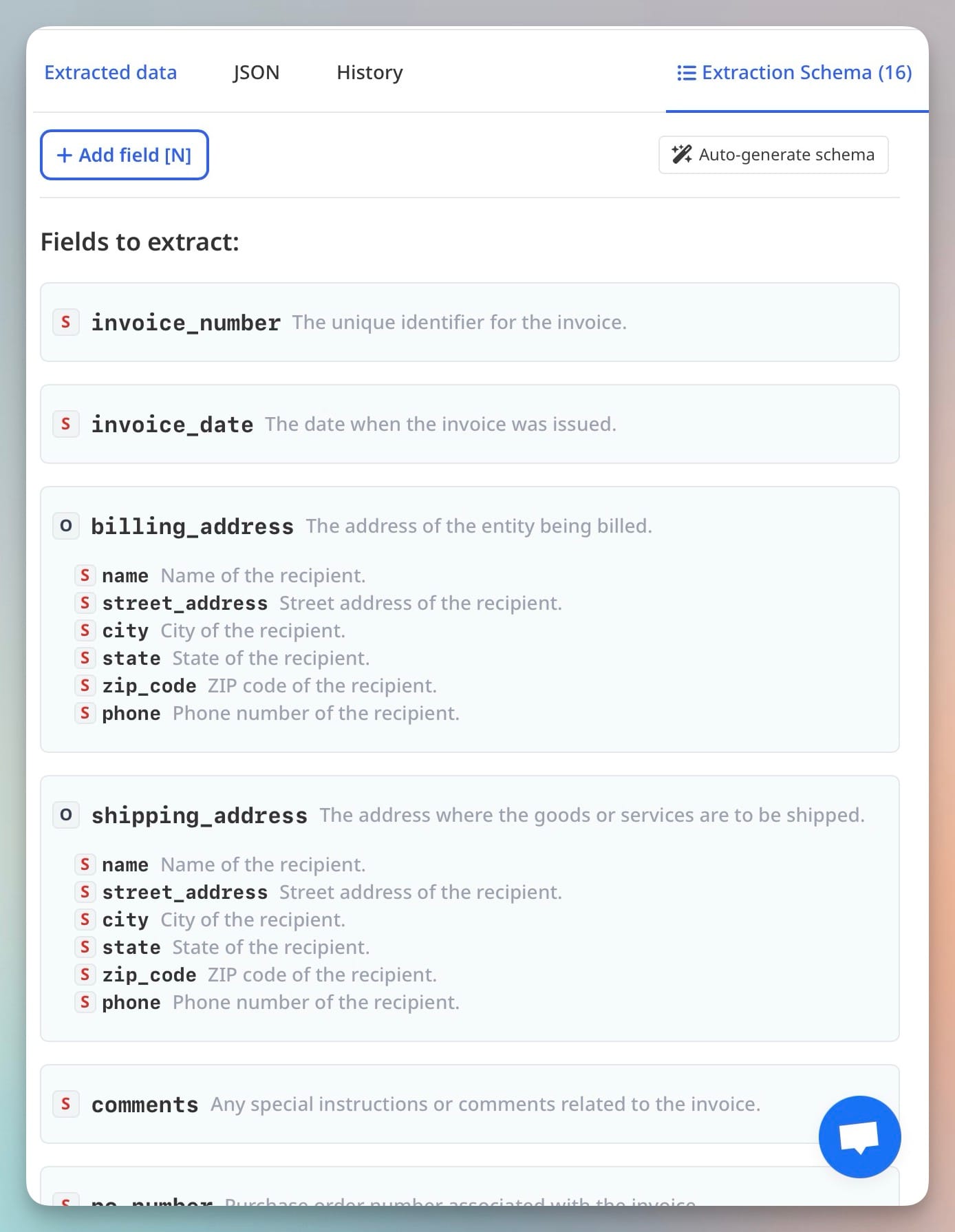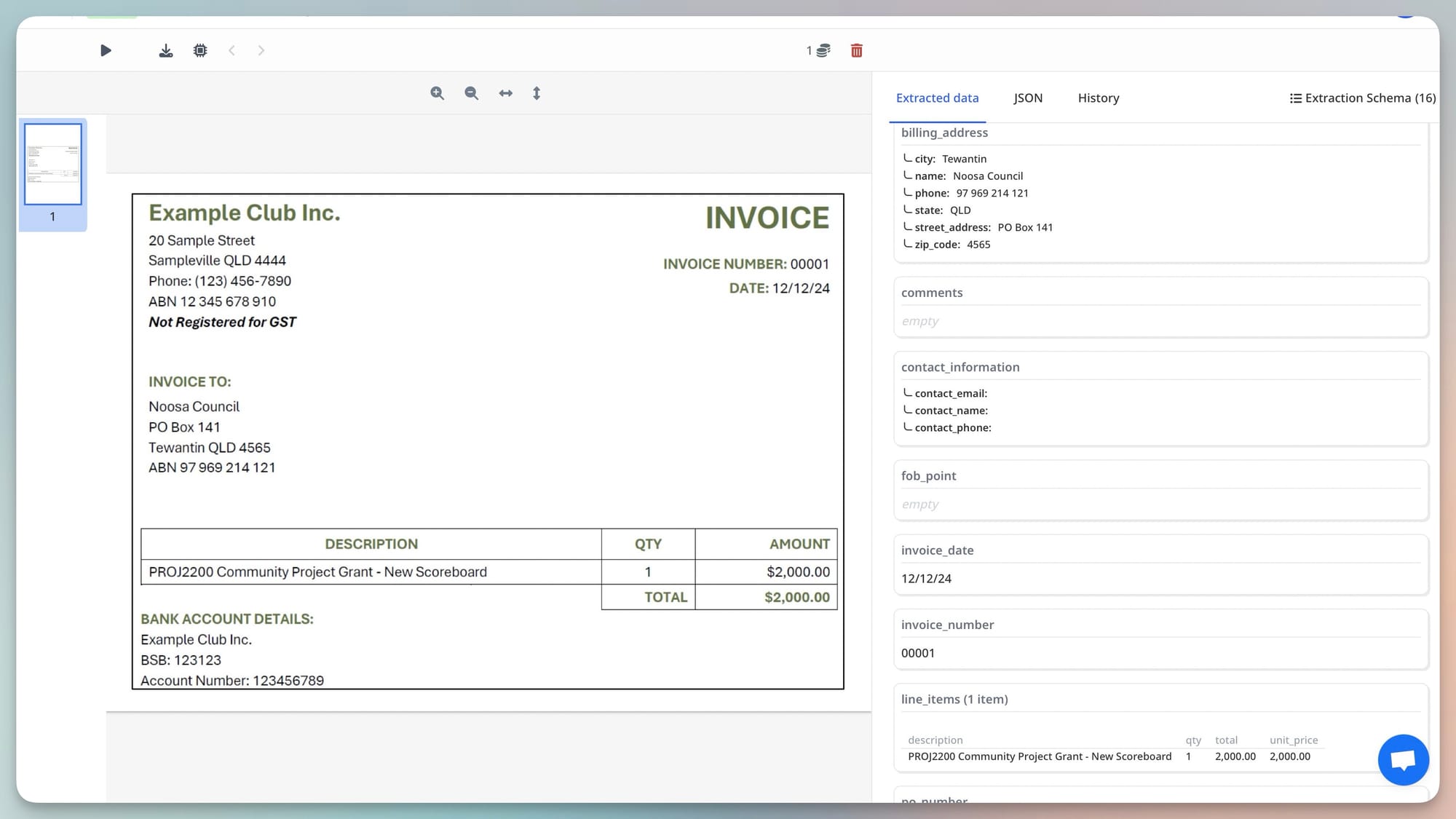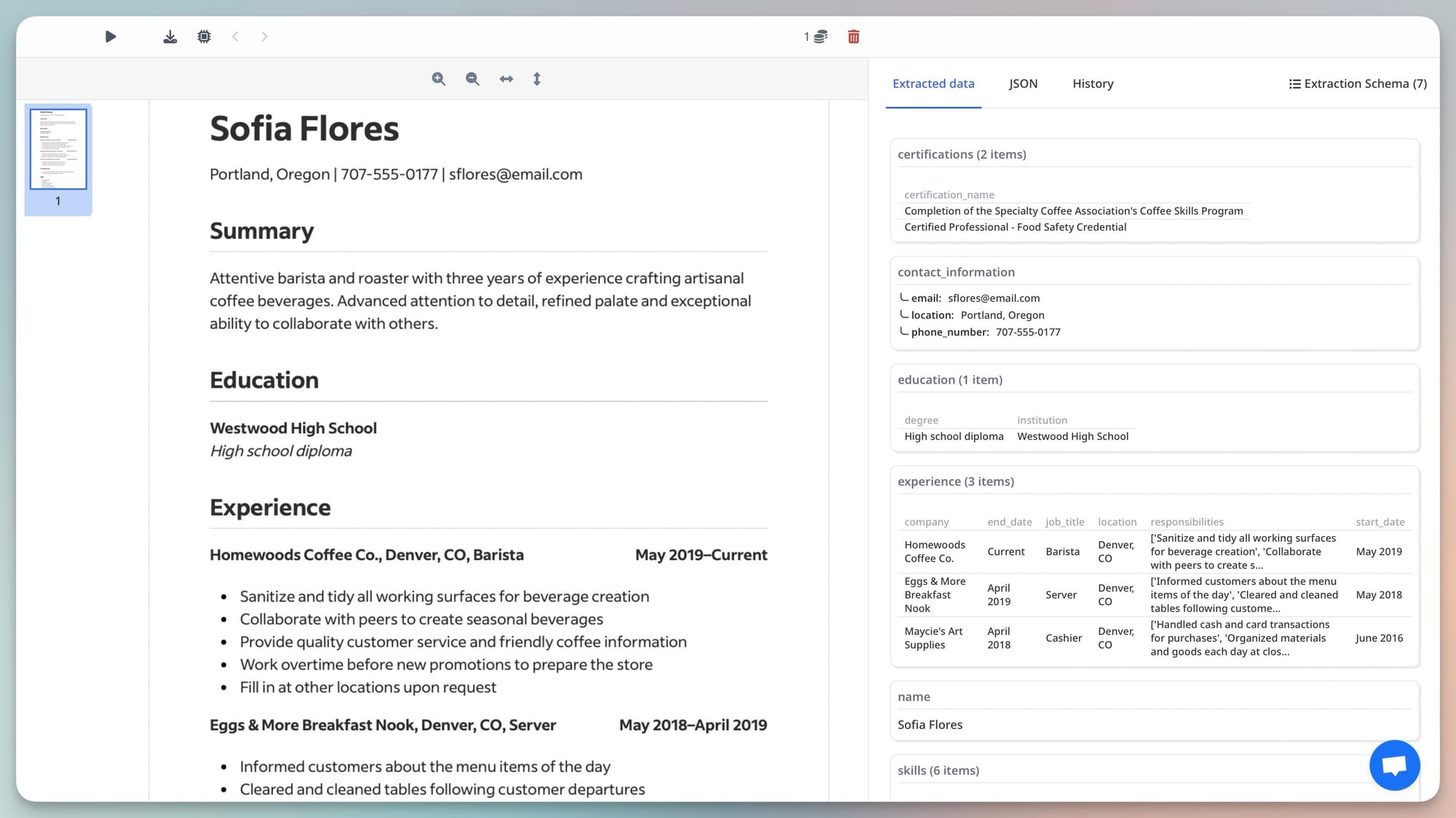How to Automatically Extract Data from Attachments in Emails (PDFs, Word, Excel)
Learn how to automatically extract data from email attachments like PDFs, Word, and Excel using AI-powered parsing with Airparser. Save time, reduce errors, and streamline your workflows with step-by-step automation.

Every day, businesses receive critical information buried inside email attachments — invoices from vendors, purchase orders from clients, signed contracts, customer intake forms, and more. These documents usually arrive as PDFs, Word docs, or Excel files attached to incoming emails.
Unfortunately, manually opening each email, downloading the attachment, and copying the data into spreadsheets or software systems is time-consuming and error-prone. If you're dealing with dozens — or hundreds — of such emails every week, it quickly becomes a bottleneck.
In this guide, we’ll show you how to automatically extract structured data from email attachments using Airparser — saving your team hours and dramatically reducing human errors.
Why Automating Data Extraction from Attachments Matters
Most automated email parsing tools only extract data from the email body. But in the real world, the most important data often lives inside attachments. Think about these common examples:
- An accounting department receives hundreds of invoices via email every month, usually as PDFs.
- An HR team gets Word or PDF resumes from candidates through job board applications.
- A logistics company receives Excel sheets with delivery schedules and customs data.
Extracting this data manually takes time. Plus, it’s repetitive work that’s prone to mistakes. Automation brings a range of benefits:
- Save hours every week on manual processing
- Improve accuracy and consistency
- Enable real-time workflows by connecting parsed data to spreadsheets, databases, or CRMs
With the right setup, incoming emails with attachments can be processed instantly — no manual work needed.
How Airparser Handles Email Attachments
Airparser is designed to handle email parsing and attachment extraction — even from complex or semi-structured documents.
Here’s how it works:
- You forward emails (manually or automatically) to your unique Airparser inbox.
- Airparser extracts and processes attachments: PDF, Word (.doc/.docx), Excel (.xls/.xlsx), and image files (JPG, PNG, scanned PDFs).
- Using AI — including both text-based and vision-based engines — Airparser parses structured data from the documents.
- The extracted data is delivered in your preferred format: CSV, Excel, Google Sheets, JSON, or sent to tools via Zapier, Make, or webhooks.
Unlike traditional OCR tools, Airparser uses advanced LLM-powered engines for parsing — which means it can handle irregular formats, multi-column layouts, and even scanned or handwritten documents.
🔗 Want to understand the difference between OCR and LLM-based parsing? Read: Comparing AI Extraction Methods: Traditional OCR vs. LLM Parsing
Step-by-Step: Extracting Data from Email Attachments Automatically
Here’s how to set up a complete automated workflow in Airparser.
Step 1: Create a Parser
- Log in to your Airparser dashboard.
- Click “New Inbox” and choose your parsing engine:
- Use the Text engine for clean digital documents.
- Use the Vision engine for scanned PDFs, complex tables, or handwritten forms.
- Upload a sample attachment — for example, a vendor invoice in PDF format.
Step 2: Define the Fields You Want to Extract
- Add field names like:
Invoice NumberInvoice DateVendor NameTotal Amount

- Airparser will analyze your document and learn where and how to extract this data — no need to write prompts or rules.

🔗 New to this? See our full guide: How to Extract Structured Data from Emails and PDFs
Step 3: Connect Your Email Source
You can get emails (with attachments) into Airparser in several ways:
- Forward emails manually to your parser’s unique inbox address (e.g.,
[email protected]) - Set up automatic forwarding in Gmail or Outlook to route matching emails directly to Airparser
- Or use Zapier or Make to connect Gmail, Outlook, or another inbox to Airparser.
When a new email arrives, Airparser will detect and extract data from the attachment(s).
Step 4: Export the Parsed Data
Once parsed, you can export data to your favorite tools:
- Google Sheets (native integration)
- Excel
- CSV, JSON
- Webhooks or REST API
- Automation tools like Zapier or Make
Parsed fields are neatly structured, ready for use in dashboards, CRMs, accounting tools, or internal databases.
Automate the Entire Workflow (Zapier, Make, or API)
Let’s take automation even further.
With Zapier or Make, you can build full workflows — no coding needed. Here are some examples:
- Invoice Automation
→ Email received with invoice.pdf
→ Airparser extracts data
→ Add row to Google Sheets
→ Notify accounts team in Slack - Resume Processing for HR
→ Job application email arrives
→ Parse attached resume (PDF/Word)
→ Send structured data to Airtable or an ATS

- Sales Order Management
→ Parse order form (Excel) from incoming email
→ Update inventory in Google Sheets
→ Create task in ClickUp
🔗 Want to go further? Check out: Advanced Automations: Building End-to-End Flows with Airparser + Zapier or Make
Privacy and Security: Your Data Stays Safe
When dealing with documents like invoices, contracts, or resumes, security is crucial.
Airparser is designed with privacy in mind:
- Data is never used for training any models.
- You can set data retention policies or delete documents manually.
- All data is encrypted in transit and at rest.
- We are fully GDPR compliant and take document privacy seriously.
Whether you're handling financial records, legal docs, or customer data, you stay in full control.
Industry Use Cases
Here are just a few industries where automatic attachment parsing is a game-changer:
- Finance & Accounting: Automate invoice entry, reconcile purchase orders, extract expense data from receipts.
- E-commerce: Parse order confirmations from marketplaces or suppliers.
- HR & Recruiting: Extract key fields from attached resumes (skills, experience, contact info).
- Logistics: Process delivery notes, customs declarations, or shipping manifests.
- Real Estate: Extract contract data, tenant info, or maintenance records from email attachments.
🔗 See also: How to Automate Subscription Invoice Parsing for SaaS Companies
Final Thoughts: Start Parsing Attachments in Minutes
Email attachments hold valuable business data — but manually managing them is slow and inefficient. With Airparser, you can extract structured data from attachments automatically, saving time and reducing errors across your workflows.
You can get started in just a few minutes:
- Create a parser
- Upload sample docs
- Forward emails
- Export the data
It’s fast, flexible, and works with your existing tools.
👉 Try Airparser for free and start parsing attachments today — no coding, no prompts, no headaches.





